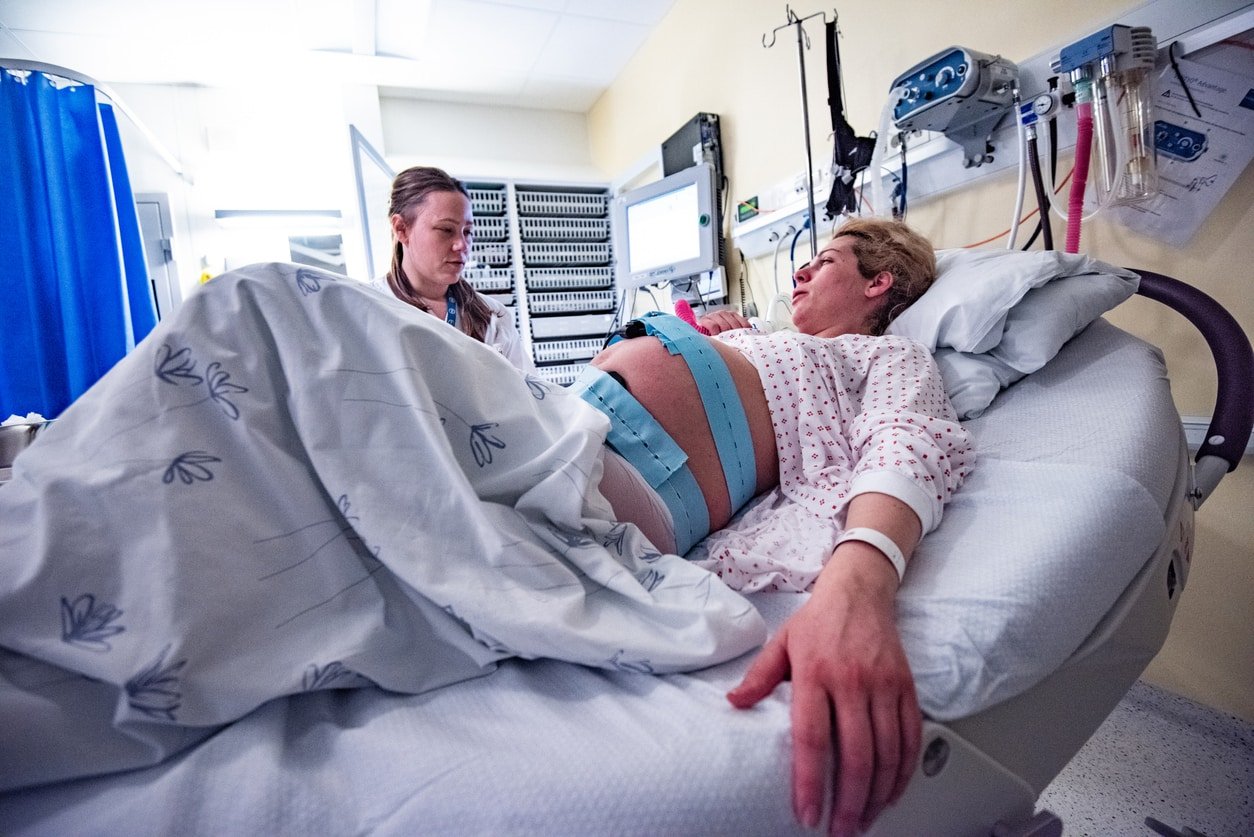
Umbilical cord prolapse is rare but can happen to anyone during any pregnancy, whether it’s your first or your fifth. However, it only occurs in about 1 to 6 deliveries out of every 1,000 births. The odds are in your favor. But this emergency means ensuring you have a qualified and experienced person helping with your delivery.2
The umbilical cord is your baby’s lifeline. It gives your baby nutrients and oxygen while still in your womb. When the umbilical cord prolapses or falls through the cervix into the vagina or birth canal before the baby, this can cause the baby’s oxygen and nutrients to decrease, which could lead to severe complications such as fetal distress, fetal demise, hypoxia, or hypoxic-ischemic encephalopathy, cerebral palsy, brain damage, or stillbirth.1,3
What Is Umbilical Cord Prolapse?
Umbilical cord prolapse happens after your water breaks, and the umbilical cord slips out of the uterus, through the cervix, and falls into the vagina or birth canal ahead of the baby during labor or delivery. In a typical delivery, your baby drops through the dilated cervix before the umbilical cord. If the umbilical cord comes first, it can get squished by the pressure of your baby’s body. Each contraction of the uterus also squeezes the cord. This life-threatening event requires immediate medical attention as it can create severe complications for the baby, such as compromised blood flow and oxygen supply. This complication usually occurs during labor, typically right before or during delivery.1
What Causes Umbilical Cord Prolapse?
We can’t predict who will have a prolapsed umbilical cord with their delivery, but several risk factors can increase the risk of a prolapsed cord, including:1, 2
- Premature rupture of membranes: When your water breaks before the baby’s head engages in the birth canal, the cord will have more space to slip through.
- Malpresentation: If the baby is in a breech position (when any other part of your baby comes out first instead of the buttocks), it can increase the chances of a prolapse.
- Multiparity: You are at a slightly higher risk if you have had multiple pregnancies and deliveries (usually five or more).
- Polyhydramnios: When there is excessive amniotic fluid in the uterus, it can increase the chances of cord prolapse.
- Preterm labor: Preterm births are more prone to umbilical cord prolapse.
But umbilical cord prolapse can happen without these risk factors. Certain conditions may increase the chances of a prolapse. These other risk factors include:1,2
- Fetal congenital disorders
- Placenta previa
- Irregularly shaped umbilical cord (too long, very thin, etc.)
- Assisted vaginal delivery (using a vacuum or forceps during delivery)4
- Low birth weight (weighing less than 5 pounds, 8 ounces, or 2.5 kilograms at birth)5
- Being pregnant with twins, triplets, or more (also known as having a multiple pregnancy)
- Irregular cord insertion to the baby (velamentous cord insertion)6
- High fetal station (the fetal station is the baby’s position relative to your pelvis during labor)
- Macrosomia (your baby is larger than the average newborn).7
- Procedures like amniotomy, when your provider breaks your water for you or inserts a balloon to ripen your cervix.8
How Is an Umbilical Cord Prolapse Diagnosed?
Your provider and staff are trained to watch for this during labor and delivery. They will look for common signs and symptoms of cord prolapse. These may include:1,2
- Visible or palpable umbilical cord protruding from the vagina.
- Fetal heart rate changes, such as decelerations or bradycardia (when the baby’s heart rate slows down too much).9
- Sudden and severe fetal distress.
- A prolapsed cord can be felt during a vaginal examination when they check your cervix’s dilation progress.
How Will Your Provider Manage a Prolapsed Cord?
If umbilical cord prolapse is suspected, your provider will quickly relieve the pressure on the prolapsed umbilical cord to make sure the baby receives adequate oxygen and blood supply. This may involve changing the mother’s position, elevating her hips, or using the Trendelenburg or knee-chest position.10
Your provider could also insert a gloved hand into the vagina to manually move the baby’s head off the cord. Delivery of the baby must occur as quickly as possible to prevent any potentially life-threatening outcomes. In most cases, the provider will perform an emergency Cesarean section to expedite the delivery and minimize the risk to the baby. A fetal monitor will continuously show the baby’s heart rate, which will help the provider decide what plan to follow.1,2
Can It Be Prevented?
Unfortunately, a prolapsed umbilical cord cannot be prevented. It’s also difficult to detect during pregnancy because of the frequent movements of the baby and the cord. Some of the risk factors for a prolapsed cord can be noted as part of the mother’s birthing plan so that the parents and the medical providers know the possibility of a prolapsed cord. But it comes down to your provider acting quickly if a prolapsed umbilical cord occurs.
Can Babies Survive a Prolapsed Umbilical Cord?
Most babies do survive a prolapsed umbilical cord. In hospitals, the number of babies that die from a prolapsed umbilical cord is about 3%. However, one study did show the rate as high as 7%. When a baby is born outside of a hospital setting, the infant death rate is almost 20 times higher.1
Umbilical cord prolapse is a rare obstetric emergency during or just before delivery. Still, your healthcare team will work quickly to deliver your baby if they detect a problem. There’s not much you can do to avoid one, but knowing the risk factors and what action needs to be taken may help you in the unlikely event it happens during childbirth.
from Baby Chick https://ift.tt/OZSaE5A
via IFTTT



0 Comments
Please ,
Don't enter span link ...